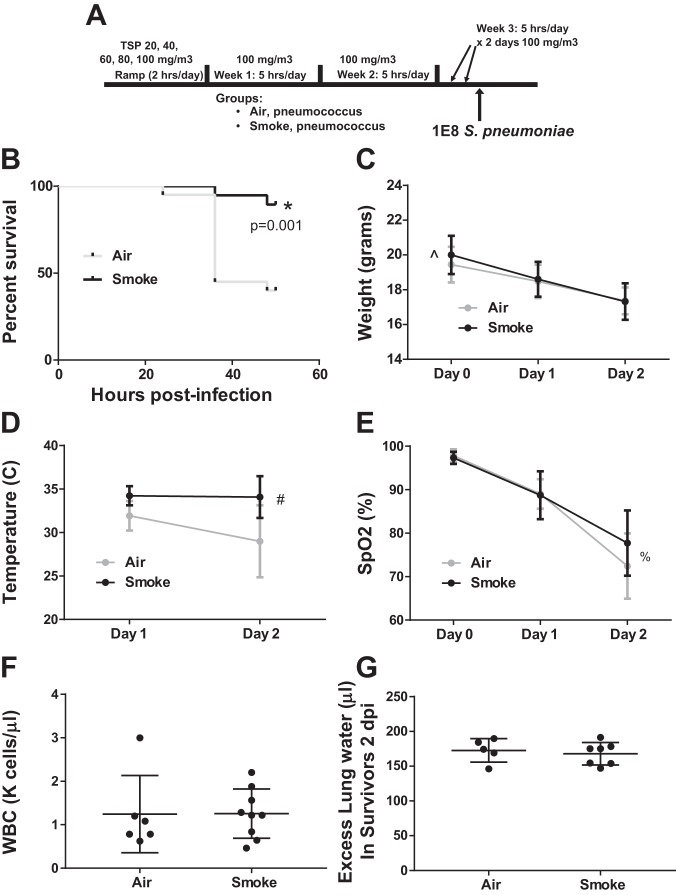Fig. 3.
Moderate-dose CS exposure increases survival in severe pneumococcal pneumonia. A: schema depicting smoke exposure followed by intranasal inoculation with 1 × 108 cfu S. pneumoniae. B: CS-exposed mice had a significant survival advantage through euthanasia at 48 h; *by log-rank test, n = 20 mice per group. C: weight loss was slightly greater over time in surviving CS-exposed mice. Data are means (SD), n = 20 per group; ^P = 0.09 for group, P < 0.0001 for time, P = 0.001 for interaction term (group* × time) by repeated-measures ANOVA. D: hypothermia in surviving mice was less severe in CS-exposed mice over time. Data are means (SD), n = 20 per group; #P = 0.4 for group, P < 0.0001 for time, P = 0.0003 for interaction term by repeated-measures ANOVA. E: arterial hypoxemia in surviving mice worsened over time but did not differ according to prior CS exposure. Data are means (SD), n = 20 per group; %P = 0.67 for group, P < 0.0001 for time, P = 0.48 for interaction term by repeated-measures ANOVA. F: peripheral leukopenia at 48 h among surviving mice was similar; P = 0.44 by Mann-Whitney. G: pulmonary edema in surviving mice was similar 48 h postinfection in CS- and air-exposed mice; P = 0.8 by Mann-Whitney.

